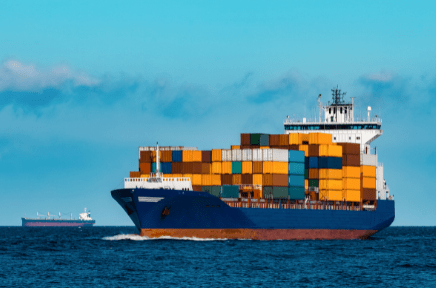In the intricate choreography of logistics, where precision is paramount and time is of the essence, the term Transloading Services emerges as a beacon of efficiency. This unsung hero of supply chain management orchestrates a seamless dance, optimizing the movement of goods across different modes of transportation. Let’s embark on a journey to unravel the layers of this logistical symphony.
Transloading Services: A Strategic Pivot in Logistics
At its essence, transloading services represent a strategic pivot, strategically positioned between origin and destination, seamlessly transitioning goods from one mode of transport to another. Whether it’s the baton pass from ship to truck, or train to plane, this process transcends conventional logistics, optimizing routes and minimizing downtime.
The precision of Transloading Services lies in their adaptability. The ability to navigate different transportation modalities with finesse ensures a continuous flow of goods, unburdened by the constraints of singular modes. It’s a logistical ballet where adaptability is the prima ballerina, pirouetting through the complexities of modern supply chains.
Intermodal Alchemy: Where Modes Converge
The alchemy of Transloading Services comes to fruition in the realm of intermodal logistics. Picture a container seamlessly transitioning from a maritime vessel to a train, then elegantly lifted onto a truck for the final leg of its journey. This harmonious convergence of modes is the hallmark of transloading services, providing a nexus where efficiency and adaptability intersect.
In the intermodal ballet, containers become the protagonists, and Transloading Services are the conductors orchestrating their movements. The nuances of intermodal logistics demand a meticulous understanding of container dimensions, weight distribution, and the peculiarities of each transportation mode. It’s a logistical sonnet where containers are the notes, and transloading services compose the symphony.
The Flexibility Quotient: Adapting to Varied Needs
One of the distinctive features that sets transloading services apart is their inherent flexibility. Unlike traditional logistics models that tether goods to a single transportation mode, transloading introduces a level of adaptability that borders on logistical acrobatics.
The flexibility of Transloading Services lies in their ability to accommodate changing circumstances. A shift in market demands, alterations in shipping schedules, or the need for route optimization—transloading services pivot seamlessly, ensuring that goods traverse the global landscape with agility. It’s a logistical dance where adaptability is the choreography, and transloading services are the nimble dancers.
Cross-Docking: Minimizing Downtime, Maximizing Efficiency
Within the realm of Transloading Services, the term cross-docking emerges as a star player. This technique involves unloading goods from an incoming transportation mode and loading them directly onto an outbound mode with minimal storage in between. It’s a logistical sleight of hand that minimizes warehouse storage, slashes handling costs, and accelerates the speed at which goods reach their final destination.
In the world of cross-docking, time is the currency, and efficiency is the dividend. The synchronized movements orchestrated by transloading services during cross-docking redefine the traditional notions of warehousing and storage, making every moment count in the relentless pursuit of streamlined logistics.
The Technological Tapestry: Innovations in Transloading Services
As technology weaves its tapestry across industries, Transloading Services are not immune to the transformative touch of innovation. The integration of IoT (Internet of Things), RFID (Radio-Frequency Identification), and advanced analytics enhances the visibility and traceability of goods in real-time.
Imagine a scenario where every pallet, crate, or container speaks a digital language, providing insights into its location, condition, and journey history. This level of transparency, facilitated by technological integration in transloading services, not only optimizes logistics but also fortifies supply chains against uncertainties.
Risk Mitigation: Beyond Efficiency to Resilience
In the lexicon of transloading services, the phrase risk mitigation reverberates with significance. As global supply chains navigate geopolitical uncertainties, natural disasters, or unforeseen disruptions, the strategic positioning and adaptability of transloading services become instrumental in mitigating risks.
The ability to swiftly reroute goods, change transportation modes, or alter logistics strategies in response to emerging risks is the forte of transloading services. In a world where resilience is as crucial as efficiency, the role of transloading services extends beyond mere logistical optimization to safeguarding the continuity of supply chains.
The Panorama of Possibilities: Closing Thoughts on Transloading Services
As we gaze upon the panorama of modern logistics, transloading services emerge not just as a facilitator but as a transformative force. Their ability to seamlessly navigate different transportation modes, their flexibility in adapting to dynamic circumstances, and their integration of cutting-edge technology paint a portrait of efficiency and resilience.
In the grand tapestry of supply chain management, transloading services stand as a testament to the evolution of logistics. It’s a world where adaptability dances with precision, and efficiency harmonizes with flexibility. In the relentless pursuit of optimizing global supply chains, transloading services are the conductors orchestrating a symphony of seamless logistics, where every note resonates with efficiency and adaptability.



